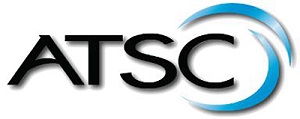ATSC AWARN: A Conversation with John Lawson
ALEXANDRIA, VA.—If all goes as planned over the next few years, Americans will be able to receive video emergency messages anytime, anywhere—even when the cellular network becomes congested or the electric grid goes down. The Advanced Warning and Response Network, a new service expected to be a key element of next-generation television broadcasting, will tackle emergency alerts in an entirely new way to accommodate our growing use of mobile and “smart” technology.

AWARN will leverage the higher data throughput, more robust transmission and improved indoor reception that will be delivered by the emerging ATSC 3.0 technical standard for broadcast TV, which is being proposed to replace the current system that ushered in HDTV more than 15 years ago. The new transmission system, expected to be an ATSC candidate standard this year, will deliver many consumer benefits, including the delivery of rich media emergency information to smartphones, tablets and indoor television receivers.
John Lawson was the president and CEO of the Association of Public Television Stations, a position he held until becoming an executive vice president for Ion Media Networks. Lawson is now the president of Convergence Services and a chief architect of the AWARN system.
BE Extra: You will be part of the ATSC’s Advanced Emergency Alert Implementation Team, which is working on the Advanced Warning and Response Network (AWARN) as part of the ATSC 3.0 standard. The purpose of AWARN is to provide a broadcast warning system in the event of an emergency. What are one or two of the features that AWARN will provide that improves on what we have today?
Lawson: The networked, mobile America of today needs and deserves an alerting system that can reach them instantly on any communications device at any time. Today we have legacy EAS, which reaches TV sets and radios. Wireless Emergency Alerts from the carriers only deliver 90 characters. Other wireless and broadband networks are subject to congestion and hacking. AWARN can bridge all of these alerting silos to make sure people get the information they need when and where they need it.

John LawsonBE Extra: What are a couple of the proposed ways AWARN can be used to provide an alert message? Audio? Full-motion video? Text? Maps?
Lawson: The huge advantage of AWARN over any other system is that it can deliver a wide range of rich-media content to the public without breaking a sweat. Emergency managers have identified the need to send video, photos, storm tracks, weather radar, evacuation routes, inundation maps, and other content. Because it leverages the one-to-many architecture of broadcasting, AWARN can deliver any or all these types of content to an unlimited number of mobile or other end-user devices simultaneously.
Get the TV Tech Newsletter
The professional video industry's #1 source for news, trends and product and tech information. Sign up below.
BE Extra: I realize that your work has yet to be done, but do you see AWARN as being addressable to a certain class of viewers? For example, the warning could go out to only mobile viewers?
Lawson: Addressability is vitally important, and public safety officials have put geo-targeting at the top of the list. Geo-targeting helps solve the “crying wolf” problem of people getting saturated with alerts over a large geographical area that aren’t relevant to them. The native interactivity and personalization features of ATSC 3.0, combined with GPS-enabled consumer devices, mean that AWARN can deliver emergency messages that are targeted at a pretty granular level.
BE Extra: Do you envision that AWARN will be able to override people using smart TVs to view Internet information? Can you give a thought or two as to how that might work?
Lawson: AWARN will build on the implementation design of Mobile EAS, in which everyone in a geo-targeted emergency zone receives a banner alert. The additional rich-media content, such as video, is downloaded to the device’s hard drive in the background. The end-users will see a menu that lets them access the other media content or URLs when and if they choose to. This is the basic idea for smart TV’s, tablets, smartphones and in-car systems.
BE Extra: Is there anything else that we should know about AWARN and the work of the ATSC’s Advanced Emergency Alert Implementation Team?
Lawson: AWARN is being designed primarily as a public alerting system, but it will be highly flexible. We’ve also attracted considerable interest from first-responders, who also face the same problem of wireless network overload when something bad happens. We hope to stimulate a robust dialogue between broadcasters and public safety officials about the best ways to serve the community in emergencies.
Bob Kovacs is the former Technology Editor for TV Tech and editor of Government Video. He is a long-time video engineer and writer, who now works as a video producer for a government agency. In 2020, Kovacs won several awards as the editor and co-producer of the short film "Rendezvous."

